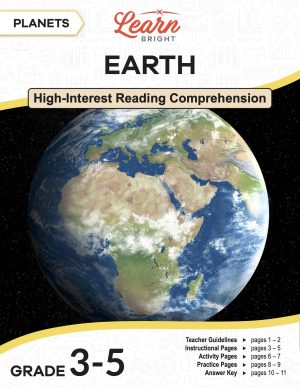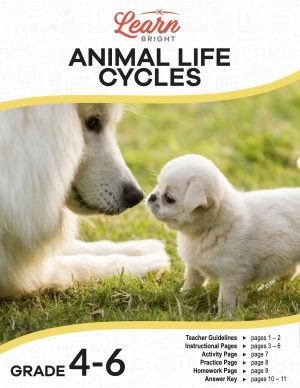Description
What our Ratios for Converting Measurements lesson plan includes
Lesson Objectives and Overview: Ratios for Converting Measurements teaches students that there are different systems to measure mass, volume, and distance. Being able to convert or change between the systems is very important for discussions between scientists and mathematicians. At the end of the lesson, students will be able to convert measurements using equivalent fractions and ratios. This lesson is for students in 5th grade and 6th grade.
Classroom Procedure
Every lesson plan provides you with a classroom procedure page that outlines a step-by-step guide to follow. You do not have to follow the guide exactly. The guide helps you organize the lesson and details when to hand out worksheets. It also lists information in the blue box that you might find useful. You will find the lesson objectives, state standards, and number of class sessions the lesson should take to complete in this area. In addition, it describes the supplies you will need as well as what and how you need to prepare beforehand. The supplies you will need for this lesson include paper, markers or crayons, scissors, and glue.
Options for Lesson
Included with this lesson is an “Options for Lesson” section that lists a number of suggestions for activities to add to the lesson or substitutions for the ones already in the lesson. If you have more advanced students, you can have them begin to chain together multiple conversions of measurements, such as how many minutes are in a year or how many seconds are in an hour. You can also have your students connect their conversions to science such as travel in outer space or other areas.
Teacher Notes
The teacher notes page includes lines that you can use to add your own notes as you’re preparing for this lesson.
RATIOS FOR CONVERTING MEASUREMENTS LESSON PLAN CONTENT PAGES
Ratios for Converting Measurements
The Ratios for Converting Measurements lesson plan includes two content pages. Ratios are a mathematical way to show how two or more quantities compare. There are three ways to write ratios, which the lesson walks through using examples.
Let’s say there are 13 girls and 7 boys in a class. You can write the ratio of girls to boys as 13:7, 13 to 7, or 13/7. All of these ratios tell you that there are 13 girls and 7 boys. When using ratios to convert between measurements, you most often use the fractional way.
The world has two main measurement systems, the Metric System of Measurement and the United States Standard System of Measurement. The lesson includes a table that shows the different measurement units and their abbreviations for each system.
The US Standard System includes inches (in), feet (ft), pounds (lb), ounces (oz), gallons (gal), and miles (m). The Metric System includes centimeters (cm), meters (m), kilograms (kg), grams (g), liters (L), and kilometers (km). All of these measurement units have abbreviations, which are shorter ways of writing words.
The easiest way to convert between measurement systems is to use a ratio. To do this, you need a conversion factor. The conversion factor between inches (in) and centimeters (cm) is 1 in = 2.54 cm. The lesson includes a table with some common conversion factors.
You can also convert between units inside of each measurement system. Instead of changing from the US System to the Metric System, you’re changing within the same system to increase or decrease the measurement unit. The lesson includes a chart with some common conversions within each measurement system.
Example Conversion Problems
Let’s solve an example conversion problem. Say you wanted to convert 3 inches into centimeters. To do this, you can use the conversion factor to find the relationship between the two measurements. You then set the problem up using the two measurements as a ratio: inches/centimeters = 1/2.54. Next, add a corresponding ratio that includes the 3 inches that you want to convert: inches/centimeters = 1/2.54 = 3/x. To solve this problem, cross multiply to find the missing value: (3*2.54) = 7.62/1 = 7.62 centimeters. Therefore, 3 inches equals 7.62 centimeters.
Let’s solve another example problem. Say you wanted to convert 2 pounds into ounces. First, use the conversion factor to find the relationship between the two measurements. Next, set the problem up using the two measurements as a ratio and the corresponding ratio that includes the 2 pounds you want to convert: ounces/pounds = 16/1 = x/2. The best method to solve this problem is to create equivalent ratios. Since you know that 1 times two 2 is equal to 2, you can multiply 16 by 2 in order to create an equivalent ratio: ounces/pounds = 16*2/1*2 = 32/2. Therefore, 2 pounds equals 32 ounces.
RATIOS FOR CONVERTING MEASUREMENTS LESSON PLAN WORKSHEETS
The Ratios for Converting Measurements lesson plan includes four worksheets: an activity worksheet, a practice worksheet, a homework assignment, and a quiz. You can refer to the guide on the classroom procedure page to determine when to hand out each worksheet.
CONVERSION CHART ACTIVITY WORKSHEET
For the activity worksheet, students will create their own conversion charts on colored sheets of paper. The teacher will write out the conversions they should include on the board and have the class group them into distance, volume, and weight. Students can also add additional conversions to their charts if they’d like. Students will then use their conversion charts to complete practice problems, so they should make sure it’s easy to use!
MEASUREMENTS PRACTICE WORKSHEET
The practice worksheet asks students to use their conversion chart to convert between different measurements. Students must show their work.
RATIOS FOR CONVERTING MEASUREMENTS HOMEWORK ASSIGNMENT
For the homework assignment, students will solve three problems. First, they will find and convert the height of three famous people (one must be a basketball player!) from the US Standard System to the Metric System (ft to m). Next, they will find a recipe of your choice and convert the measurements from the US Standard System to the Metric System. Finally, they will find the weight of three animals or insects and convert from the US Standard System to the Metric System.
QUIZ
This lesson also includes a quiz that you can use to test students’ understanding of the lesson material. For the quiz, students will use their conversion chart to convert between different measurements. Students must show their work.
Worksheet Answer Keys
This lesson plan includes answer keys for the practice worksheet and the quiz. If you choose to administer the lesson pages to your students via PDF, you will need to save a new file that omits these pages. Otherwise, you can simply print out the applicable pages and keep these as reference for yourself when grading assignments.









